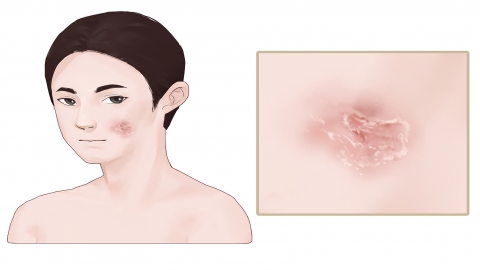How to determine if it's a minor injury
Determining whether an injury is minor is generally based on aspects such as structural damage to tissues or organs, manifestations of functional impairment, wound or scar length, abrasion and contusion area, and injuries to specific body regions. The specific analysis is as follows:

1. Structural damage to tissues or organs: If the injury causes minor damage to local tissue or organ structures—for example, a nasal bone fracture or rib fracture—where the fracture does not result in significant displacement or affect surrounding critical structures, it falls within the category of minor injury. Minor fractures typically do not leave significant sequelae after healing and have minimal overall impact on the body.
2. Functional impairment: Temporary functional impairments caused by the injury, such as brief dizziness following a head injury, mild short-term hearing loss after an ear injury, or mild joint movement limitation following limb injury, may be considered as minor injuries if these impairments spontaneously resolve within a short time or recover with simple treatment.
3. Wound or scar length: There are specific standards for wound or scar length on different body parts. For example, a single wound or scar on a limb measuring 1.0 cm or longer, or multiple wounds or scars with a total length of 1.5 cm or more; a single wound or scar on the hand measuring 1.0 cm or longer, or multiple wounds or scars with a total length of 1.5 cm or more; or a wound or scar on the neck measuring 1.0 cm or longer, all meet the criteria for determining a minor injury.
4. Abrasion and contusion area: Injuries covering certain surface areas of abrasion or contusion in different body regions can be classified as minor injuries. For example, facial skin abrasion of 2.0 cm² or larger; neck abrasion of 4.0 cm² or larger, or contusion of 2.0 cm² or larger; trunk soft tissue contusion of 15.0 cm² or larger, or abrasion of 20.0 cm² or larger; hand abrasion of 10.0 cm² or larger, or contusion of 6.0 cm² or larger, etc.
5. Injuries to specific body regions: Specific injuries to certain areas are clearly defined. For instance, eye contusions, injuries affecting appearance after trauma; ear lobe wounds; nasal bone fractures or nosebleeds; oral mucosal damage, loosening of two or more teeth or Grade III loosening of one tooth; traumatic eardrum perforation, etc., are usually considered minor injuries if no more severe complications are present.
Although minor injuries generally do not require urgent medical intervention, appropriate wound cleaning should be performed, and disinfection and dressing may be necessary when needed, to promote healing and prevent infection.







